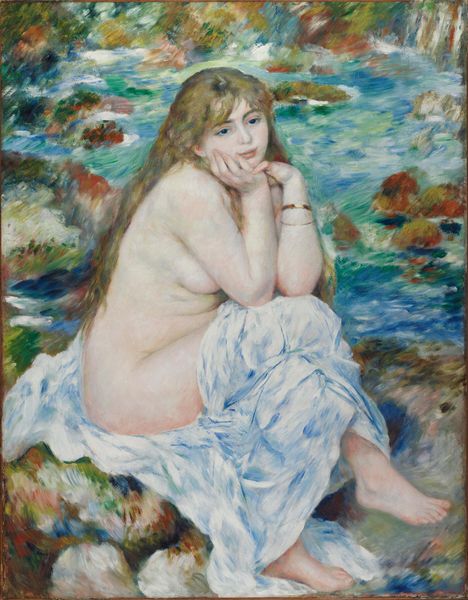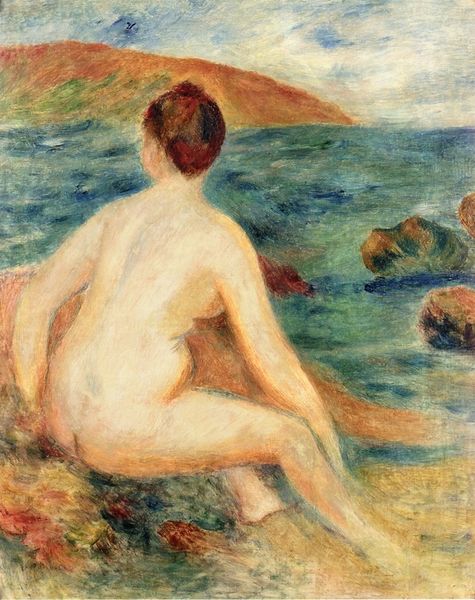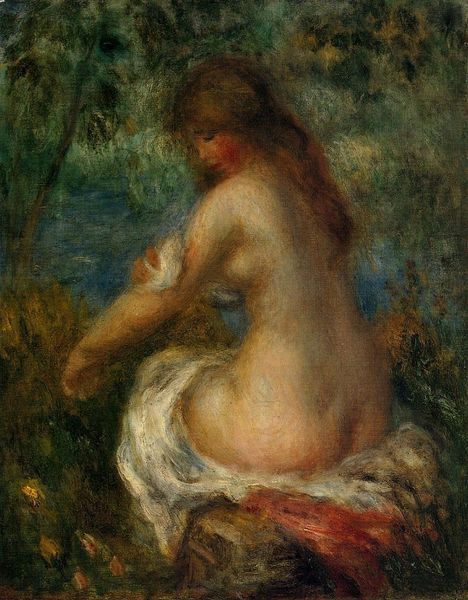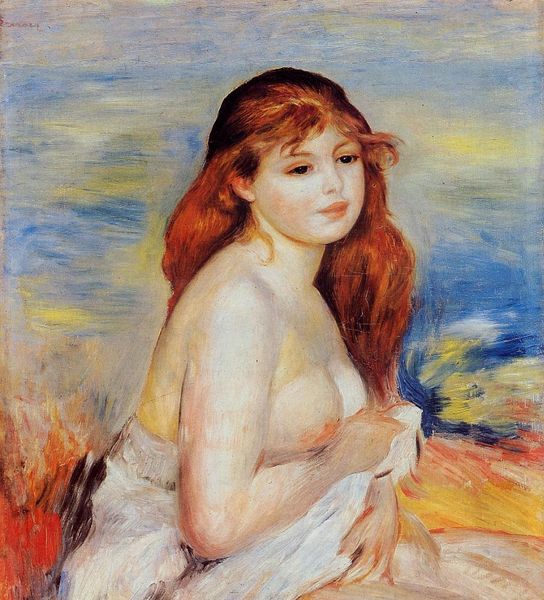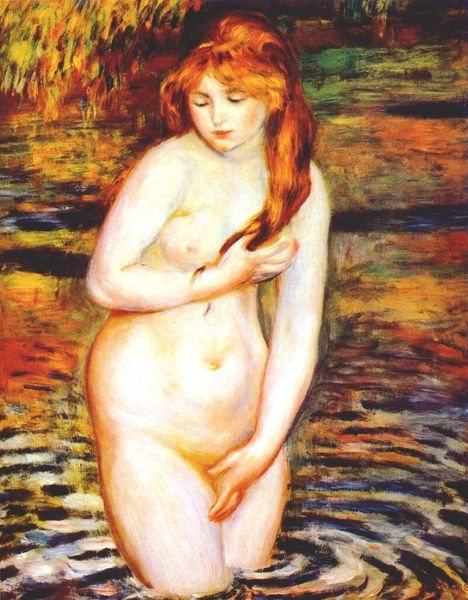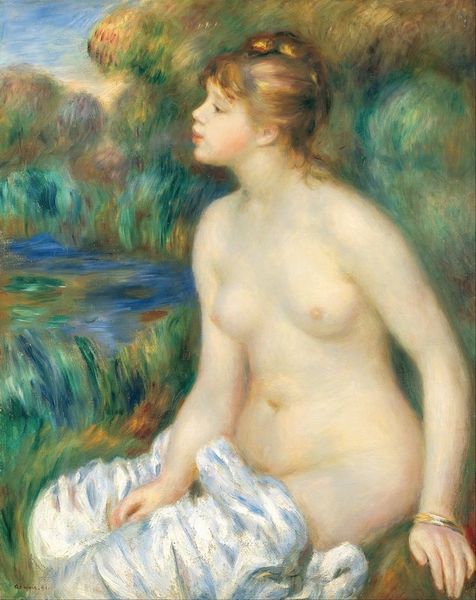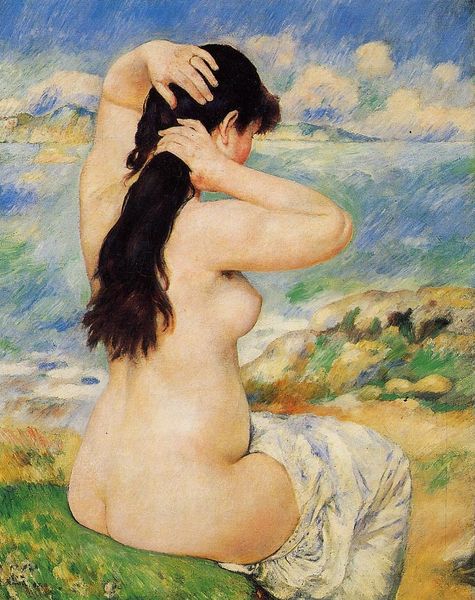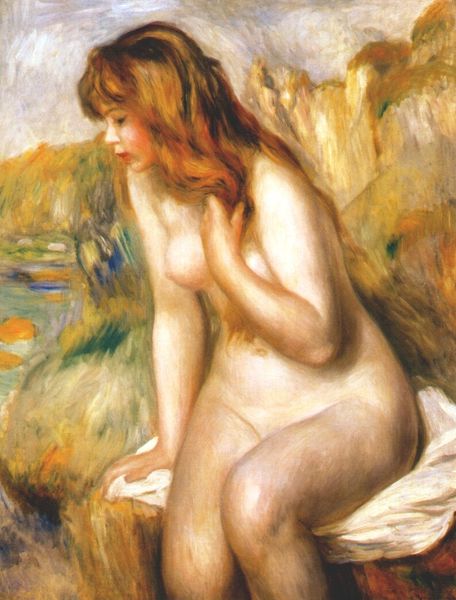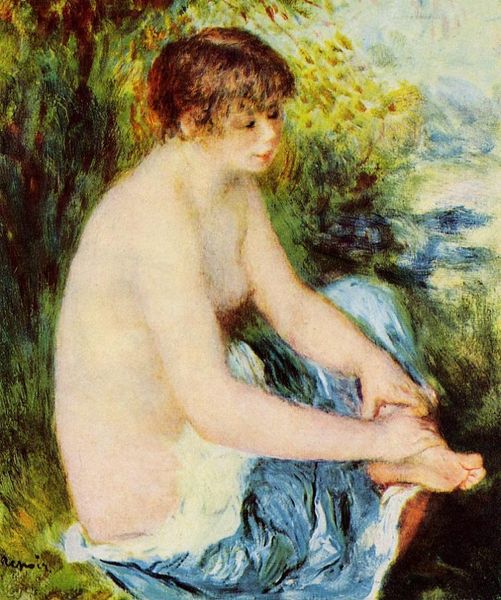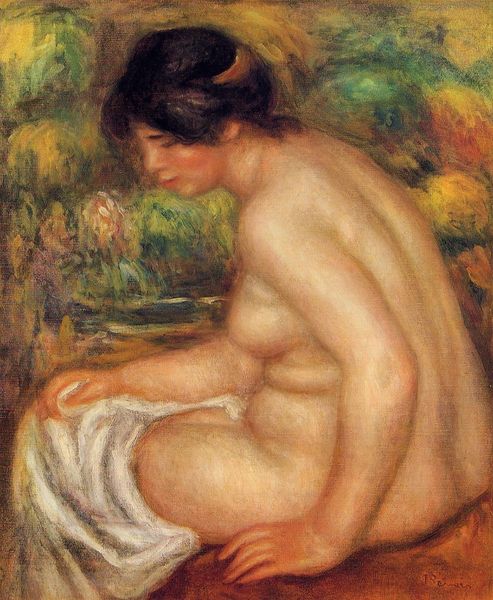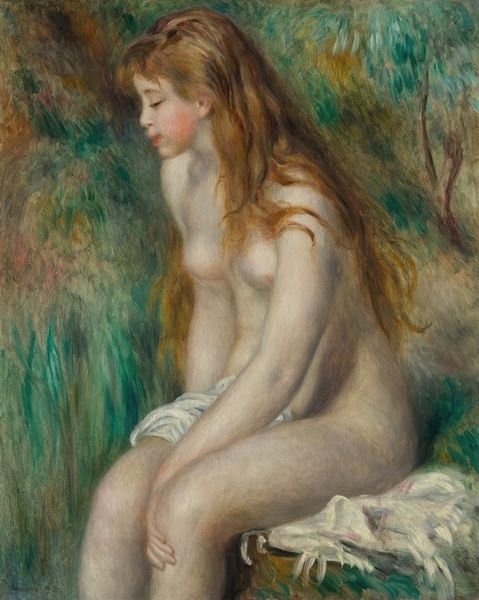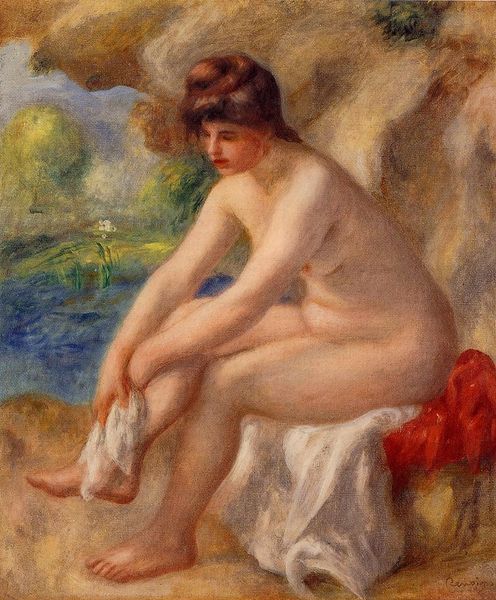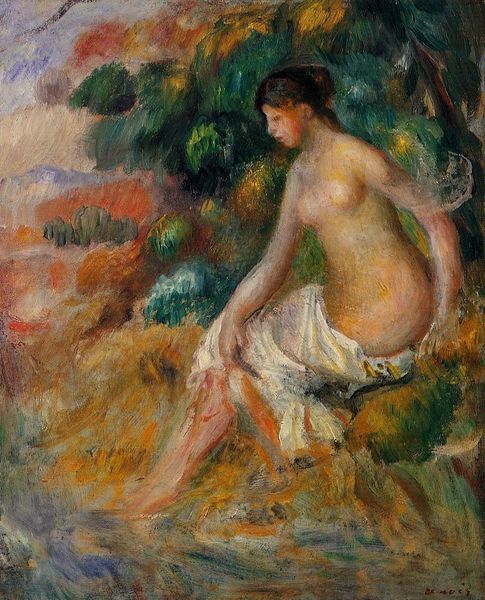
Copyright: Public domain
Curator: Look at this oil on canvas artwork: Renoir’s “Seated Nude,” completed around 1885. It's currently held at the Fogg Museum. What strikes you immediately about it? Editor: A contemplative stillness. The textures of water and stone blur into the soft curves of the bather. There’s a reverie happening, almost mythological in its remove from everyday life. Curator: Yes, that sense of reverie is quite deliberate. Renoir was part of a broader movement questioning the academic standards of the time. This piece, with its blurred lines and idyllic setting, suggests an escape from the industrialized world. Editor: It feels steeped in classical symbolism, particularly concerning female representation and nature. Water often represents purification or transformation, the nude symbolizes an idealized humanity. It's not just a woman; she embodies nature's beauty. Curator: Indeed. This reflects the increasing urbanization and industrialization in late 19th century France and beyond. Art increasingly functioned as an escape valve—idealized representations of a lost Eden. One thing worth observing is the figure is somewhat idealized, and there's an implication of display, or audience built into it. She seems to be aware of her viewers' gaze. Editor: Precisely. Her position draws the eye upwards in a sweeping motion across the painting—I mean, she invites our gaze but does so indirectly. Her slightly averted eyes suggest thoughtfulness but also self-awareness in performance before our viewership. She’s poised between nature and culture. Curator: I'm glad that you noticed. In art historical discussions, this issue became evermore important. To what extent do historical constructions of gender impact the gaze of our contemporary museums? The work certainly has strong compositional links to much earlier paintings—the women bathing motif in Western art is something well established before 1885. Editor: Thinking about visual vocabularies that accumulate over centuries, Renoir’s approach almost domesticates these powerful archetypes—makes them gentler, more approachable perhaps. Curator: Agreed. It’s a fascinating interplay between tradition and innovation and these images invite us to question the accepted norms through these images, even today. Editor: A glimpse into our visual past which asks new questions. I shall continue to dwell on her slightly self conscious gesture…
Comments
No comments
Be the first to comment and join the conversation on the ultimate creative platform.
